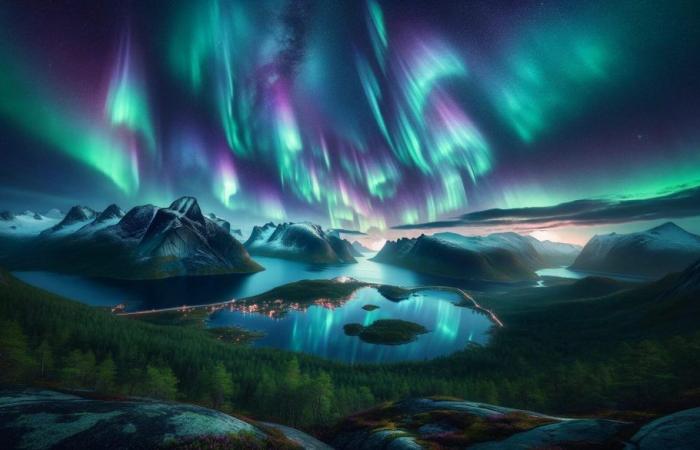Space weather forecasters “they were surprised” Yesterday, June 28when a coronal mass ejection (CME) hit the Earth and caused a severe geomagnetic storm (G4 class). The CME was predicted, but not the severity of the storm. “Daylight on Europe and the Americas has hidden a potentially explosive aurora show,” reports the specialized website SpaceWeather.com.
The cloud of solar plasma that reached Earth was blasted into space on June 25 by an erupting magnetic filament in the Sun’s southern hemisphere.
What is a filament?
Filaments are long, thin structures that extend across the surface of the star, regions of very dense, “cold” gas that form due to the solar magnetic fields and appear dark precisely because they are colder than the surrounding regions.
These particular very elongated structures can occasionally also cause eruptions of solar material into space.
What is a coronal mass ejection (CME)
And’coronal mass ejection (CME) is a massive emission of plasma and magnetic fields from the solar corona, its outer atmosphere. It is caused by a sudden release of accumulated magnetic energy. This can happen following a reorganization of the solar magnetic fields, often linked to the activity of sunspots. During a CME, the solar magnetic field distorts and releases enormous amounts of charged matter, mainly protons and electrons, into the interplanetary environment. These emissions can travel through interplanetary space at speeds ranging from hundreds to thousands of km/s. When they reach Earth, CMEs can interact with Earth’s magnetic field, causing geomagnetic storms. These storms can affect power grids, communications systems, and orbiting satellites. They also accelerate charged particles along Earth’s magnetic field lines, creating spectacular auroras.
What is a geomagnetic storm
A storm geomagnetica it is an event caused by the interaction between the Earth’s magnetic field and the solar windwhich is made up of charged particles from the Sun. When particularly intense, these interactions can cause disturbances in the Earth’s magnetosphere, with consequences for communications, electronic navigation systems and electrical grids.
The classification of geomagnetic storms from G1 to G5 is defined by the Space Weather Prediction Center (SWPC) of NOAA.
- G1 – Mild effects, with possible disturbances in satellite operations and high-frequency communications, but with low risk to electrical networks;
- G2 – Moderate effects, can cause disruptions in satellite communications, increase resistance on GPS navigation systems and generate instability in electrical grids, especially at high latitudes;
- G3 – Significant effects, with possible radio blackouts in the polar regions, disturbances in GPS navigation and potential temporary damage to electrical networks;
- G4 – Severe effects, can cause extensive radio blackouts, disturbances in GPS navigation and damage to electrical networks leading to large-scale blackouts;
- G5 – Exceptionally severe effects, with the potential to damage satellites, disrupt global communications, disrupt GPS navigation, and cause widespread and prolonged blackouts in power grids.
What are the Northern Lights?
The dawn Northern Lights are spectacular light phenomena that occur mainly in the polar regions, especially visible near the North and South Poles. These auroras are caused by the interaction of charged particles from the solar wind with the Earth’s magnetosphere. When the solar wind, consisting mainly of electrons and protons, hits the Earth’s magnetosphere, some of these particles are channeled along the magnetic field lines toward the poles. Here, these charged particles interact with gas atoms in the upper atmosphere, typically oxygen and nitrogen, exciting them. When the excited atoms return to their normal state, they release energy in the form of light, creating the beautiful, colorful auroras.
Continue reading on MeteoWeb






